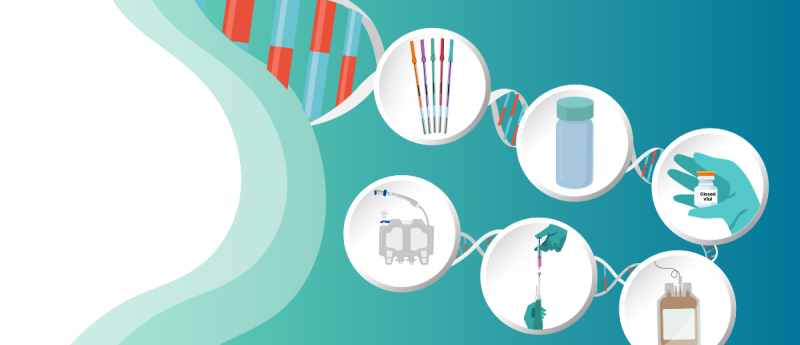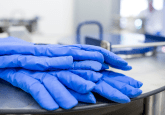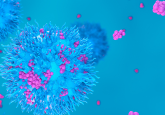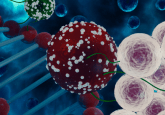The shifting design principles of final containers: an interview with Sean Werner

Sean Werner discusses how the evolution of cryogenic containers has routinely overcome challenges and encountered new ones. He discusses the culmination in cell and gene therapy-specific final containers and how the difference between autologous and allogeneic therapies alters design principles for forthcoming containers.
This interview is part of the RegMedNet In Focus on cryogenic containment for cell and gene therapies. Discover expert opinions on this topic by visiting our feature homepage.
Questions
Cryogenic containers in the cell and gene therapy industry are a critical component given that advanced medicinal therapeutic products (ATMPs) have inherently reduced stability at non-cryogenic temperatures compared to traditional pharmaceuticals and biologics. Current understanding of Critical Quality Attributes makes it difficult to ensure stability at varying temperatures. Considerations around primary packaging must, therefore, identify containers able to withstand cryogenic temperatures, as well as take into account other key parameters such as target drug volume, downstream processing capabilities, transport and logistics, and finally, ability to be used by the clinical site.
As per much of the cell and gene therapy industry, many of the packaging tools originated from the blood processing space. While initially this allowed for rapid progress to produce small numbers of early-stage products for clinical trials, the industry recognized that many of the processes, reagents and consumables could not directly be transitioned when considering scaled ATMP manufacturing.
Over the last few years, improvements in materials, specifically flexible films, as well as closed processing components and automated filling solutions, have led to significant advancements. Novel closed vials have overcome many of the challenges associated with cryovials and rubber-stopped vials, such as sterility and cross-contamination. The films used for bag manufacture have also improved significantly, although bags still require significant processing for air removal and protection against fracture using external support cases and handling equipment. In addition, bags have inherent issues with volume retention, particularly an issue for low-volume products. Particulates in bags have long been vexing for manufacturers, with elimination during bag manufacturing being difficult, and inspection of bags prior to the filling of the drug product being near impossible.
As mentioned above, cryogenic vials have long been used within the research space. Vials are critical for small-volume product storage, and thus, the development of closed, ready-to-use cryogenic storage vials has been a valuable evolution for the industry. However, the range of in-product volumes necessitates larger volume containers, with the sensitivity of some cell types to the cryogenic freezing process meaning that a large version of the vial can be detrimental. Bags allow an optimized surface-area-to-volume ratio, which allows for a reproducible freezing profile across larger volumes.
The cryogenic preservation required for ATMP storage means that much of the downstream solutions used by research or traditional biopharma are not suitable. For example, the container closure integrity of traditional solutions is difficult to achieve with non-sealed systems. With autologous products and the scale-out model rather than scale-up, there is an infrastructure need to move to closed processing start-to-finish. The desire for closed-system processing dictates that many containers, for example, screw cap vials, will not meet the need. In the case of allogeneic cell therapies or gene therapies, dedicated fill and finish systems are needed. Given the sensitivity of cell products to both temperature and, in some cases, the cryogenic process itself, due consideration must be given to the filling process time and environmental controls. Subsequently, the chosen container must allow integration into this process.
Hesitation to adopt novel technologies is a well-known attribute of both traditional biopharma and ATMP manufacturing. Certainly, reluctance to move towards an unproven, costly, or poorly understood tool is understandable, with regulatory and performance challenges and unknowns potentially difficult to overcome. In such an environment, innovation for innovation’s sake is unlikely to overcome such hurdles. Innovative products need to unquestionably overcome the challenges that the developers are experiencing. This can be achieved through close relationships between the therapy developer and the tools provider and by listening to the voice of the customer. Should such a solid foundation be achieved, development can be treated more as a collaboration between tools providers and therapy developers than a transactional process. If we can accomplish this, we should see jumps in our industry’s development.
In many cases, currently available tools for ATMP processing address the manufacturing needs. However, in the case of large-volume storage, there is significant room for improvement. Continued fracture risk of cryobags, within which is stored a high-value and potentially one-time therapeutic dose, is a major risk. Manufacturers often attempt to mitigate this risk through the removal of air and the use of a steel cassette as a secondary packaging. While the cassette can reduce fractures, the added cost and their environmental impact (frequently these cases are discarded along with the storage container) is a point to be addressed. In addition, cryobags illicit a number of other challenges for developers. From a final product quality perspective, particulates are a major concern of bags. Particulates in bags are often found above specifications and many manufacturers have limitations on the ability to reduce them. On the user side, incoming product or in-use inspection is difficult as particulates likely reside within the welded edges of the bags. Overall, bags have a significant handling burden that carries costs that are not often recognized. Bags, most of the time, are still hand-filled. While the fracture risks are reduced by the improved films and protective cassettes, air bubbles in the bag remain a high-risk failure point. To address that, bags must have air removed, a function that is very difficult to automate. Finally, although the current allogeneic scale is in the single-digit hundreds of units, we should be looking toward the future of treating diseases with batch sizes much larger. Even at the current scale, filling bags and removing air by hand vastly limits the batch size. To accomplish higher throughput, container systems that meet the performance need of cell therapies but are also compatible with automation is important. Bags are unlikely to meet this requirement without the use of complicated and difficult-to-use manifold systems.
Given the desire to reduce the cost of goods for cell therapy products, many autologous manufacturers have begun leaning towards a scale-out ballroom manufacturing paradigm, which dictates that the process needs to be closed to reduce the contamination risk and the high burden of change over process. Considering this, final drug packaging for autologous products must, therefore, be compatible with such processing. That is, containers must be compatible with sterile welding, closed connectors or other technologies yet to come.
Allogeneic processing, however, should really consider the ability to be integrated within automated filling lines. This can be a difficult process to consider. As discussed above, the scale at which allogeneic products are filled during clinical trials is in the high tens to hundreds of containers, for which a truly high-throughput drug filling line, akin to that used for filling in biopharma, is not suitable. Certainly, there are current automation systems in the cell and gene therapy space capable of filling cryobags at that scale, but such devices are not capable of moving up to the scale of thousands or tens of thousands of vials per batch at commercial scale. Therefore, the choice of container should ensure flexibility in its ability to be filled, using the current automation available within the cell therapy sector, as well as the ability to be transitioned to a high-throughput filling line should the product progress to commercial launch.
Meet the interviewee
Sean Werner, Chief Technical Officer of Cell Processing, BioLife Solutions
Sean Werner is the Chief Technology Officer of Cell Processing at BioLife Solutions (IN, USA), a leading provider of bioproduction tools and services to the cell and gene therapy and broader biopharma markets. BioLife acquired Sexton Biotechnologies in 2021, where Sean was President of the company, which provided processing and handling solutions for the cell and gene therapy industry. Sean received his PhD in Biology from Purdue University (IN, USA) followed by post-doctoral positions at the Indiana University School of Medicine and Eli Lilly (IN, USA).
Sean has previous experience in various roles in global regulatory and general management functions supporting medical devices, autologous cell therapy and single-use disposable development programs. In his 15 years working in the life science industry, he has guided pre-clinical and clinical testing and submission strategies, leading to the global commercialization of multiple medical devices and bioprocessing tools.
Disclaimer
The opinions expressed in this interview are those of the interviewee and do not necessarily reflect the views of RegMedNet or Future Science Group.
In association with






